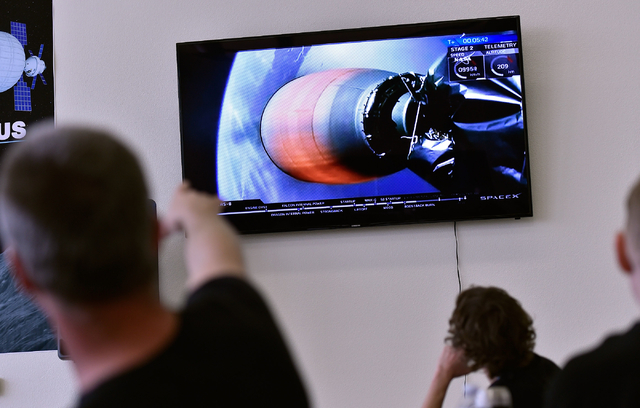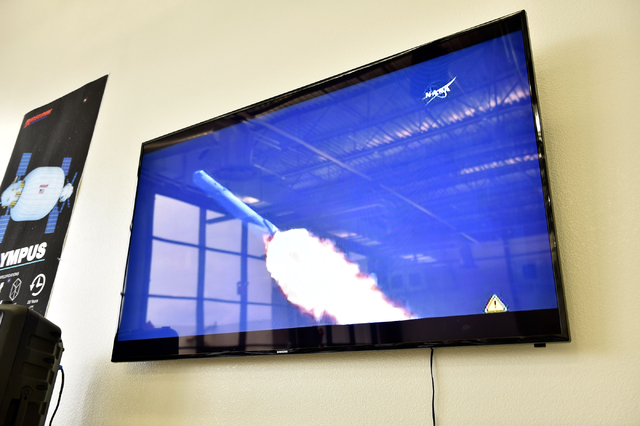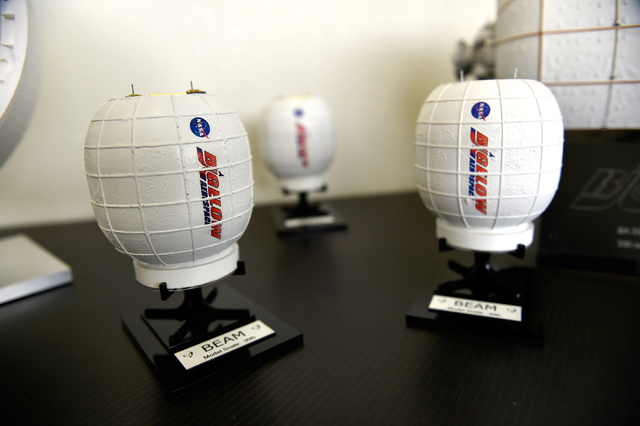NASA, Bigelow plan their next move after expandable space module fails to inflate
Engineers from NASA and Bigelow Aerospace will meet Friday morning to discuss their next move after the North Las Vegas company’s expandable habitat failed to inflate properly early Thursday morning.
The Bigelow Expandable Activity Module, or BEAM, was expected to quadruple in size in less than an hour as it filled with air from the International Space Station. Instead, technicians at Johnson Space Center in Houston called off the orbital inflation after more than two hours of slower-than-expected progress.
In a statement Thursday afternoon, NASA said engineering teams would monitor the module overnight for any changes in its shape while the space station crew takes occasional air-pressure readings.
NASA said both BEAM and the station are in “a stable configuration” and the six-man crew is safe.
Thursday’s inflation attempt was carried live on NASA TV and was meant to mark the beginning of a two-year test to see how Bigelow’s design holds up in space, where crew members need to be shielded from heat, radiation, tiny meteoroids and other “hyper-velocity” orbital junk.
Starting at 3:13 a.m. local time Thursday, NASA astronaut Jeff Williams began releasing small bursts of air into the module a few seconds at a time, but BEAM did not seem to be expanding with the increased air pressure as designed.
When fully inflated, the barrel-shaped test module is about the size of a small bedroom. In its compressed form, it resembles a layer cake or a crushed aluminum can.
The compressed module was carried into orbit by an unmanned SpaceX rocket on April 8 and captured by the space station on April 10.
Six days later, the station’s robotic arm unloaded BEAM from the trunk of SpaceX’s Dragon spacecraft and attached it near the bay windows where crew members snap pictures of the Earth below.
NASA picked Bigelow Aerospace to build and test inflatable space environments at the firm’s 350,000-square-foot facility near Martin Luther King Boulevard and Cheyenne Avenue in 2011.
Expandable modules are designed to be lighter and take up less cargo space on launch vehicles than traditional metal habitats. NASA and Bigelow believe the technology could lead to the development of orbiting labs, factories and flexible living spaces on the moon and eventually Mars.
The aerospace company founded in 1999 by Las Vegas native and hotel developer Robert Bigelow is already developing two, much larger inflatable modules: the cylinder-shaped B330, 20 times the size of the BEAM and equipped with its own life support system, and the Olympus, which is more than twice the size of the entire International Space Station.
Robert Bigelow has said the first B330 could be ready to put into orbit by 2020, assuming BEAM passes its two-year audition.
Back on board the International Space Station, Williams shrugged off what happened Thursday.
“These are the kinds of things the team is up for the challenge for,” the astronaut told mission control as he floated weightlessly in his socks roughly 250 miles above the Earth. “That’s space business.”
Contact Henry Brean at hbrean@reviewjournal.com or 702-383-0350. Find @RefriedBrean on Twitter.
RELATED
North Las Vegas company's space habitat rockets into orbit























